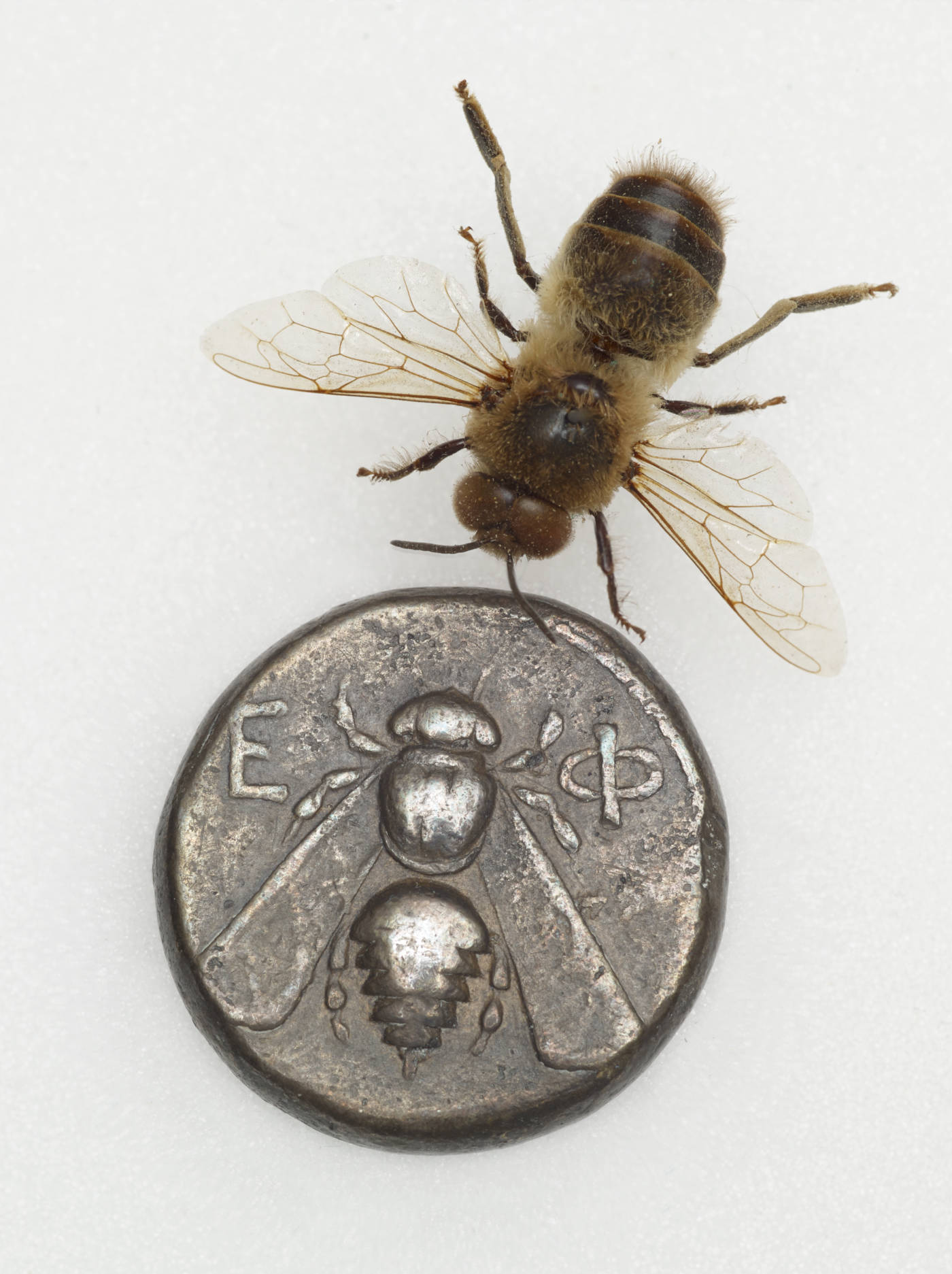
in English original
This object has been translated into 11 different languages by 11 different users
Bees are the symbol of Manchester. Due to their hardworking nature, they came to represent the city during the industrial revolution.
Bees are important in the mythology of many cultures. For example, in many European countries, there is an old tradition of ‘telling the bees’ where the bees would need to be informed of any births, marriages, or deaths in the village. How are bees perceived by you, or in your culture?
Do you have something you’d like to say, in your own language or English, about the object or translation? We’d like to hear what you think.
Translations are community-sourced and for anyone to participate in, however you use your language. For more information, see Community Guidelines.
9 Jul, 2023
Bee picture
24 Jun, 2023
Notes on Greek culture
In Greek Mythology bees play an important part in the lives of people in various forms, myths, and symbols.
For example, Melissa or ‘Μέλισσα’ in Greek which means bee, in Greek Mythology was the daughter of the king of Crete Melisseus, sister of Amalthea and nurse of Zeus, when he was an infant
(see the painting – ‘Le Jupiter infantile Nourri par la chèvre Amalthée’ by Nicolas Poussin, c.1638). His mother, Rhea, hid him in Crete to save him from Cronus, who used to eat his children. According to a myth, when Zeus’ father, Cronus, found out about Melissa, he turned her into a worm, but Zeus later turned her into a queen bee out of gratitude. Additionally, according to ancient Greek honey was the food of “mortals and immortals”, was considered divine food that gave immortality and strength, because its enormous nutritional value. Nowadays, honey is an extremely important part of the Mediterranean diet in Greece. Some varieties of Greek honey include Flower honey, Thyme honey, Pine honey (that’s my favourite) and Chestnut honey. A bowl of Greek yogurt with honey and some walnuts on the top is a timeless dessert.
Greek yogurt with honey and walnuts (about the benefits and the recipe you can visit
-https://insightsgreece.com/benefits-of-greek-yogurt-with-walnuts-and-honey/)
31 Mar, 2023
Notes on Italian culture
Since bees are popular symbols in many cultures it probably isn’t too surprising to know that they have been commonly represented by many artists throughout centuries and across the globe.
We can find an example of this phenomenon in the Fountain of the Bees in Rome.
In the Renaissance, it was common for small fountains to be built next to the much bigger monumental fountains so that the smaller ones could be used by private citizens as watering troughs for horses. It is for this very reason that, in 1644, Pope Urban VIII Barberini commissioned Gian Lorenzo Bernini to build a small fountain to be erected not far from the Triton Fountain, the masterpiece of the same artist that had been erected between 1642 and 1643.
Gian Lorenzo Bernini built the small fountain in the form of an open shell decorated with three bees: the symbol of the Pope’s family.
With the intention of wishing the pontiff well, Bernini had a Latin inscription carved on the fountain mentioning “the 22nd year of his pontificate”. But, at the time of the inauguration, this anniversary was still two months away.
Romans at the time disliked the rich and powerful Barberini family and took this opportunity to make fun of them by saying that “having them Barberini sucked the whole world, now they wanted to suck time too!”
To put an end to the scandal, the Pope’s nephew, Cardinal Francesco Barberini, arranged for the last ‘I’ in ‘XXII’ to be removed, to change the epigraph to ‘twenty-first year of pontificate’.
The gesture, however, was interpreted as a wish for misfortune, which later became reality.
In fact, Pope Urban VIII died shortly afterwards: only eight days before completing twenty-two years of his pontificate.
Not only were the Fountain of the Bees and the Fountain of the Triton made by the same artist but they were also connected as the formervdrew large quantities of water from the basin of the latter.
The Roman people thus started mocking the three bees in the Fountain saying that they sucked a great deal of water but returned very little. This was a clear allusion to the huge taxes the government imposed, returning very little benefit to the people.
The fountain also had a troubled history in later years: it was dismantled in 1865, during the reorganisation of Via Sistina, where it originally stood. It was then rebuilt in 1915 and placed in the Piazza Barberini in Rome where the Via Veneto enters the piazza.
If you’re ever in Rome, I am sure you will see the famous Triton Fountain in Piazza Barberini but next time you’re there I hope you will feel inclined to also pay a visit to the Fountain of the Bees located nearby and maybe have a laugh thinking about the 17th century Romans mocking this very unlucky fountain.